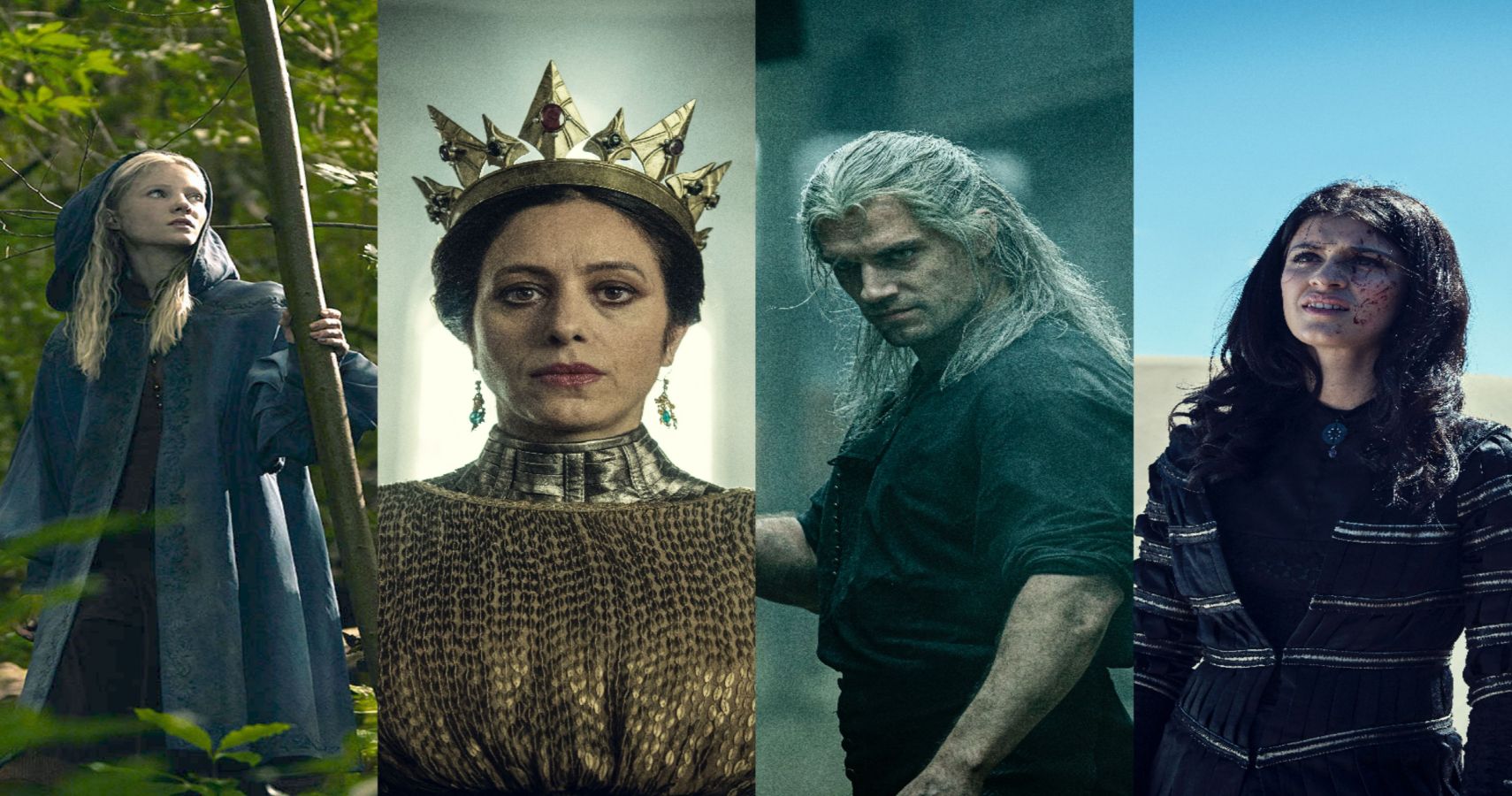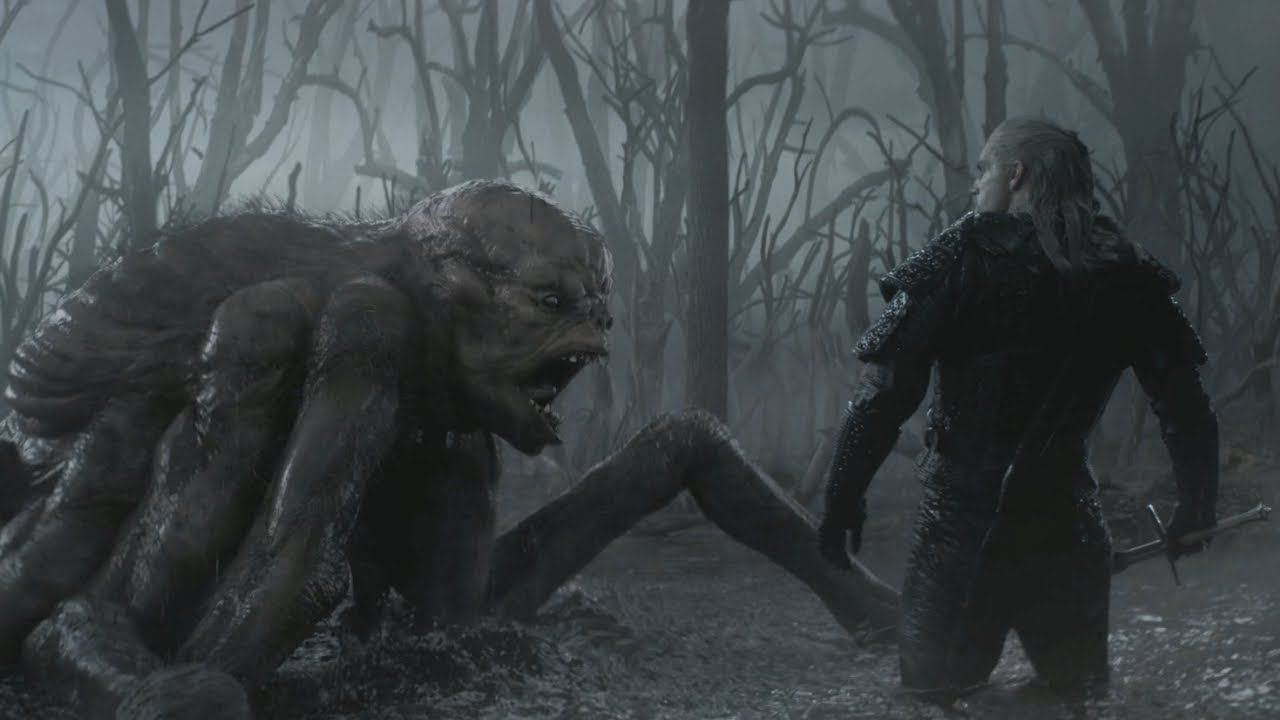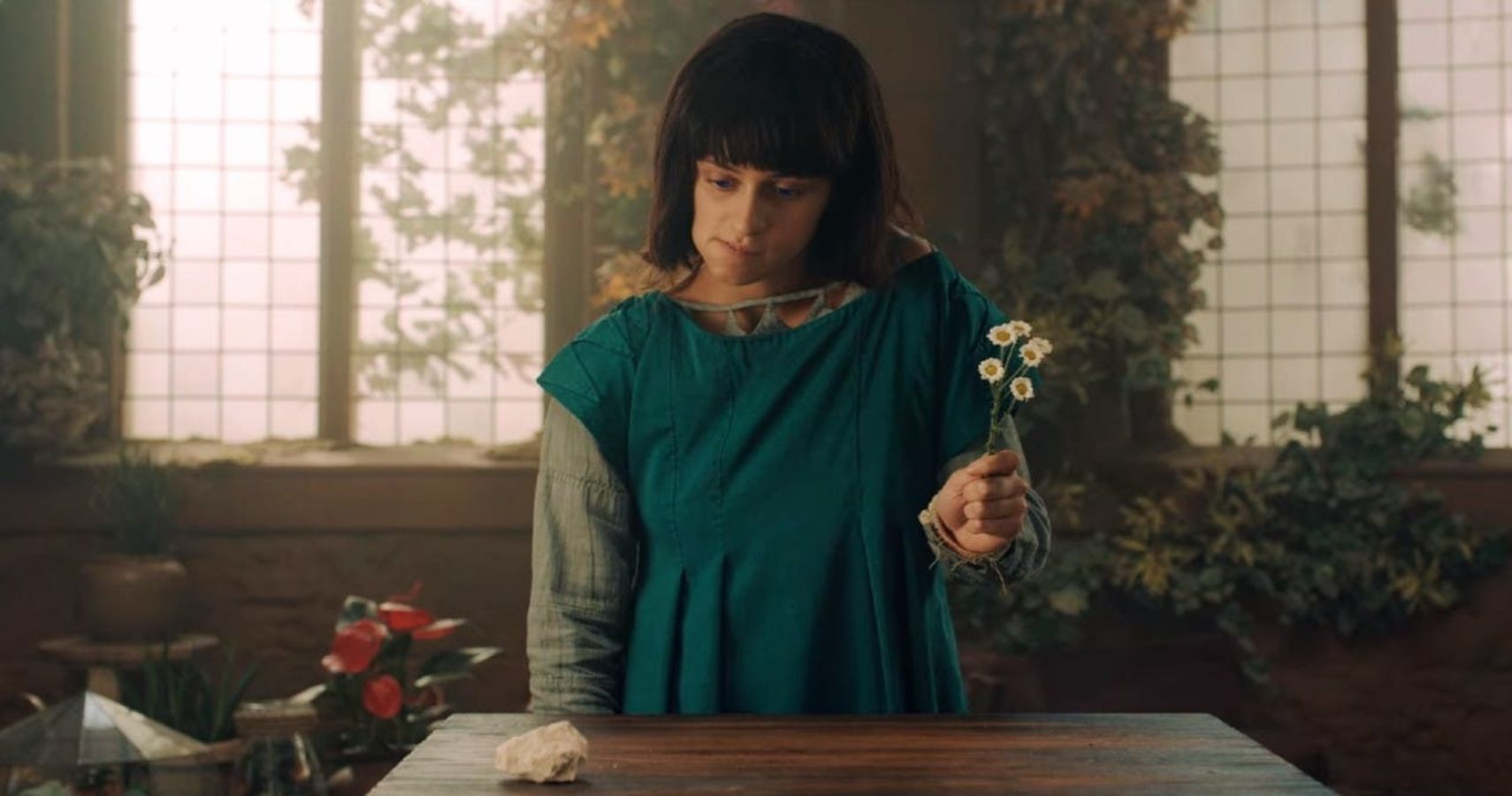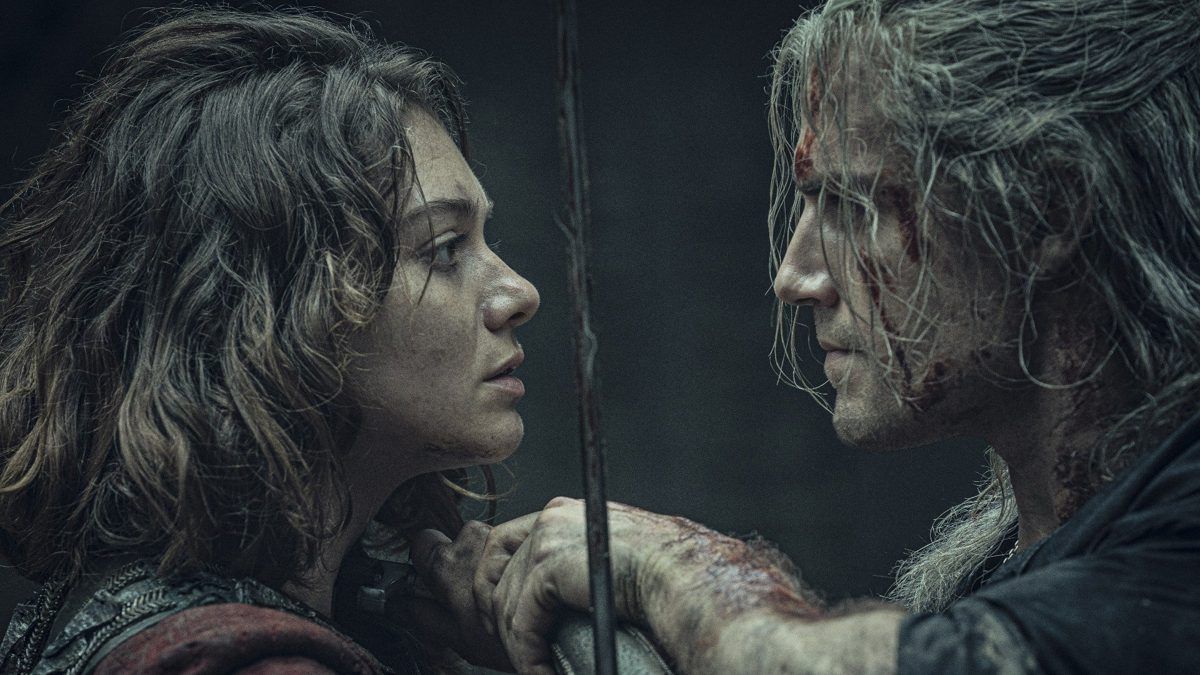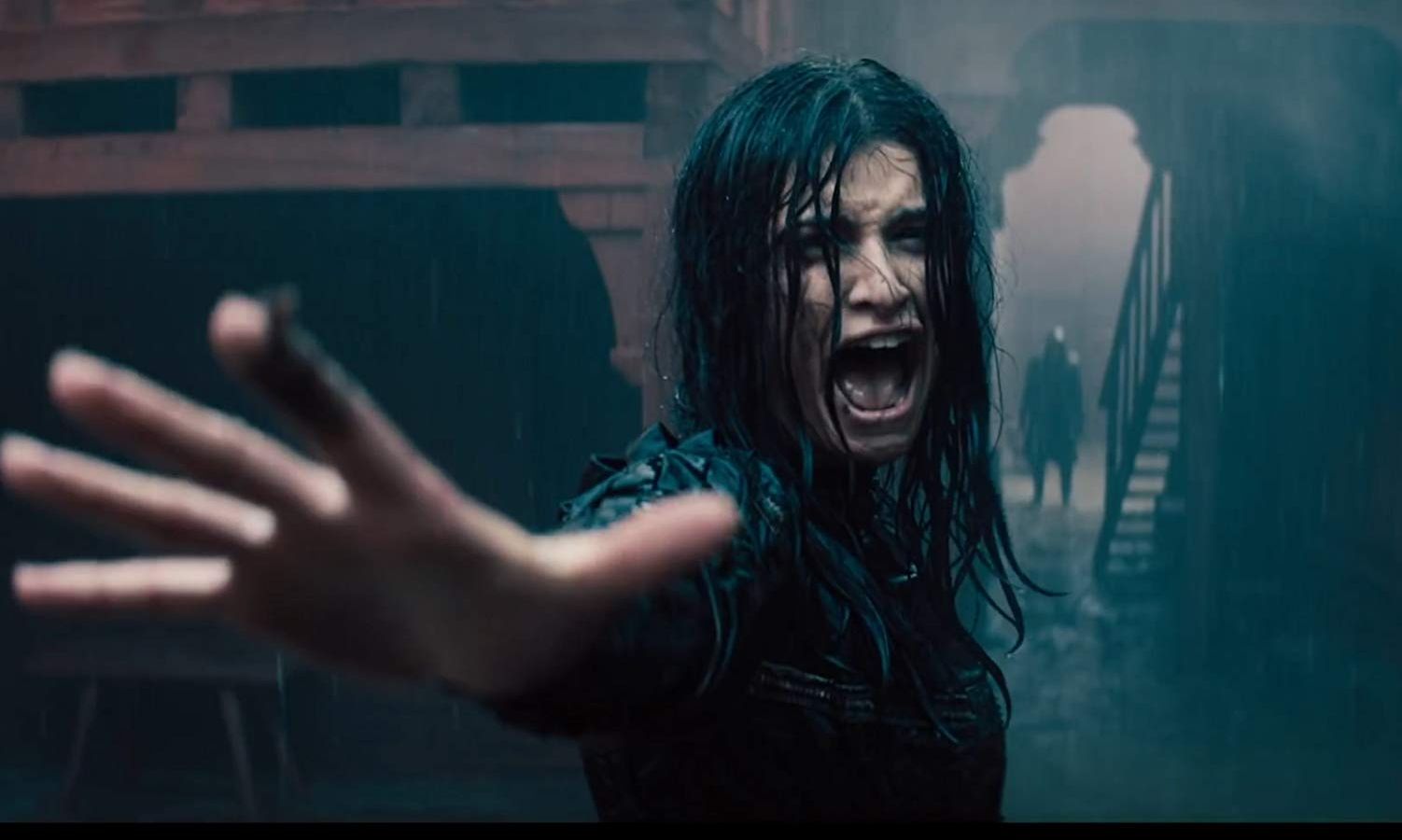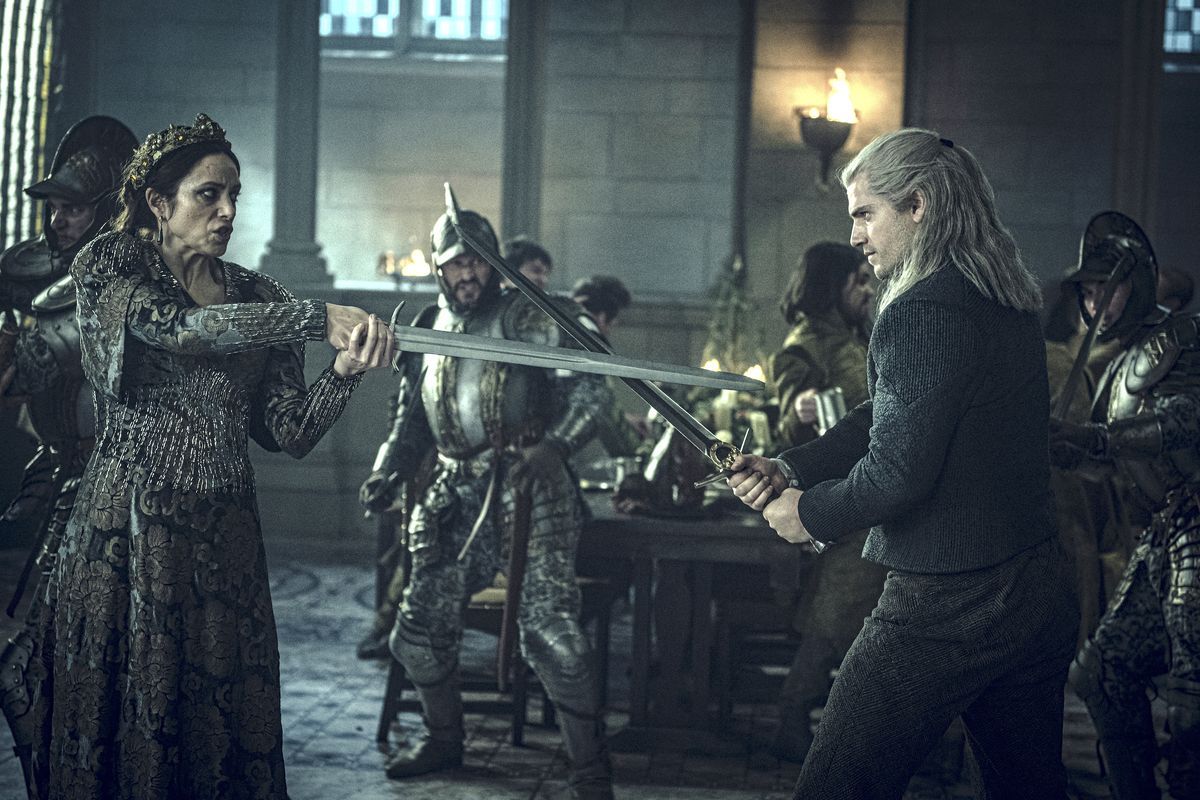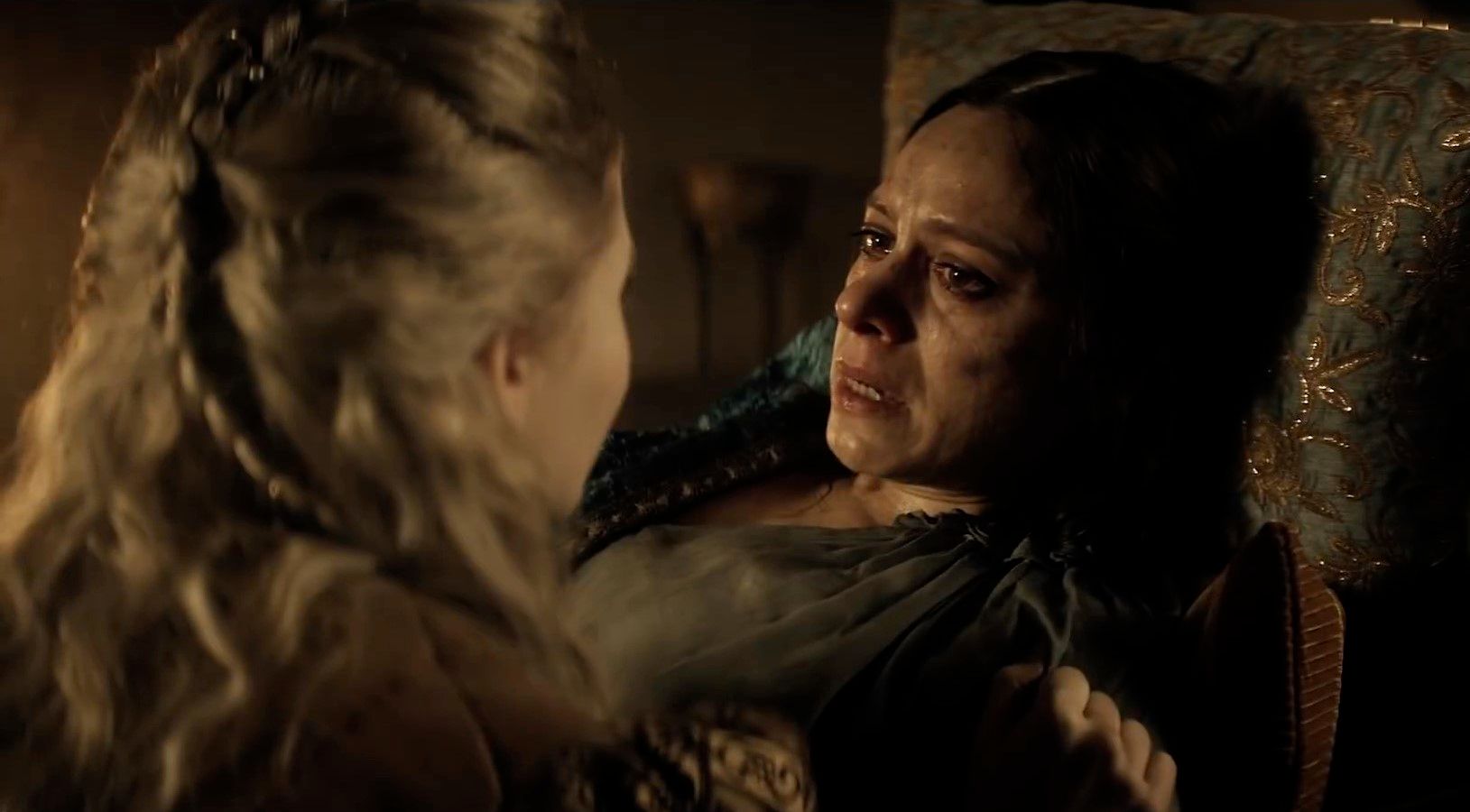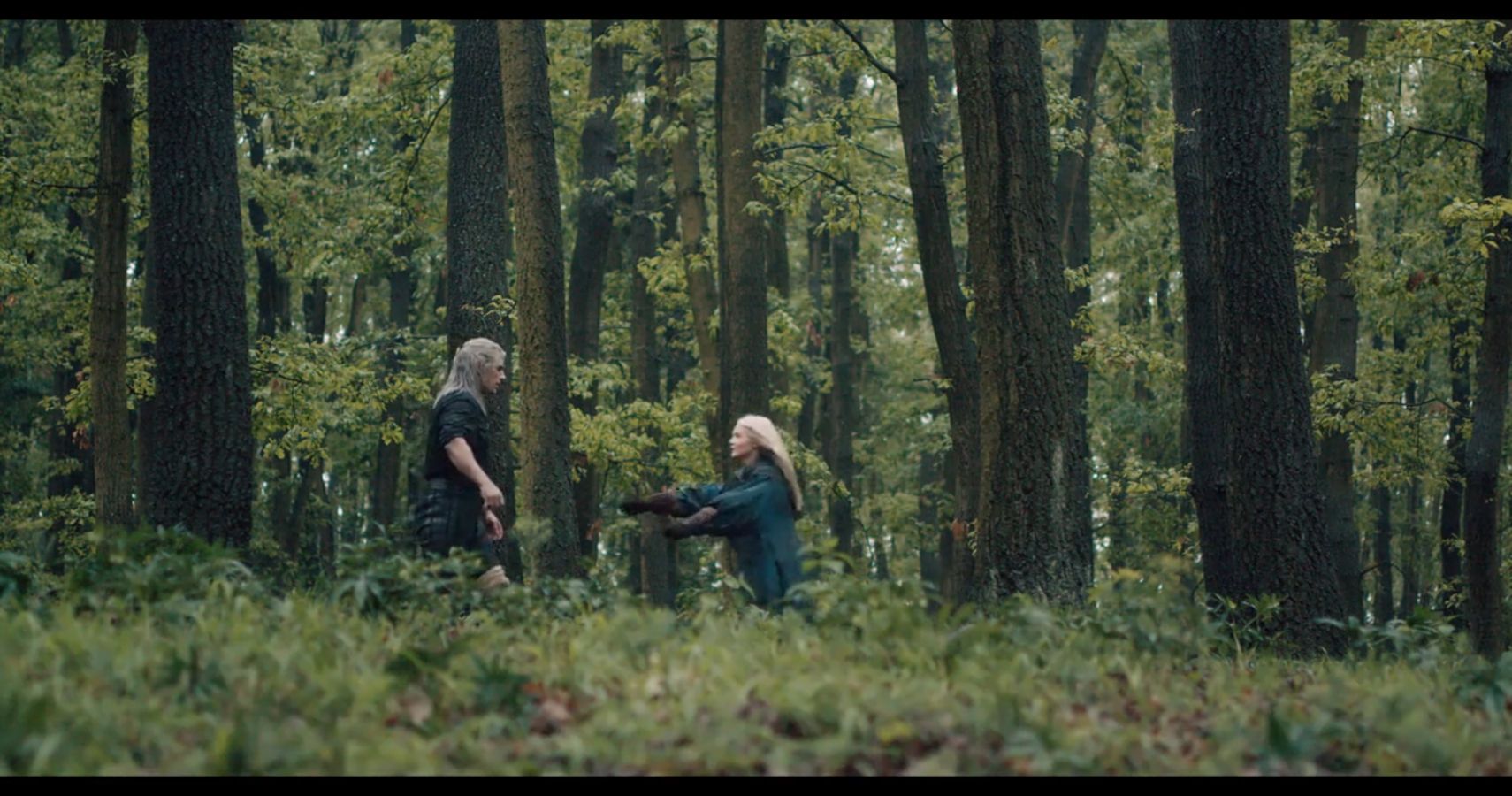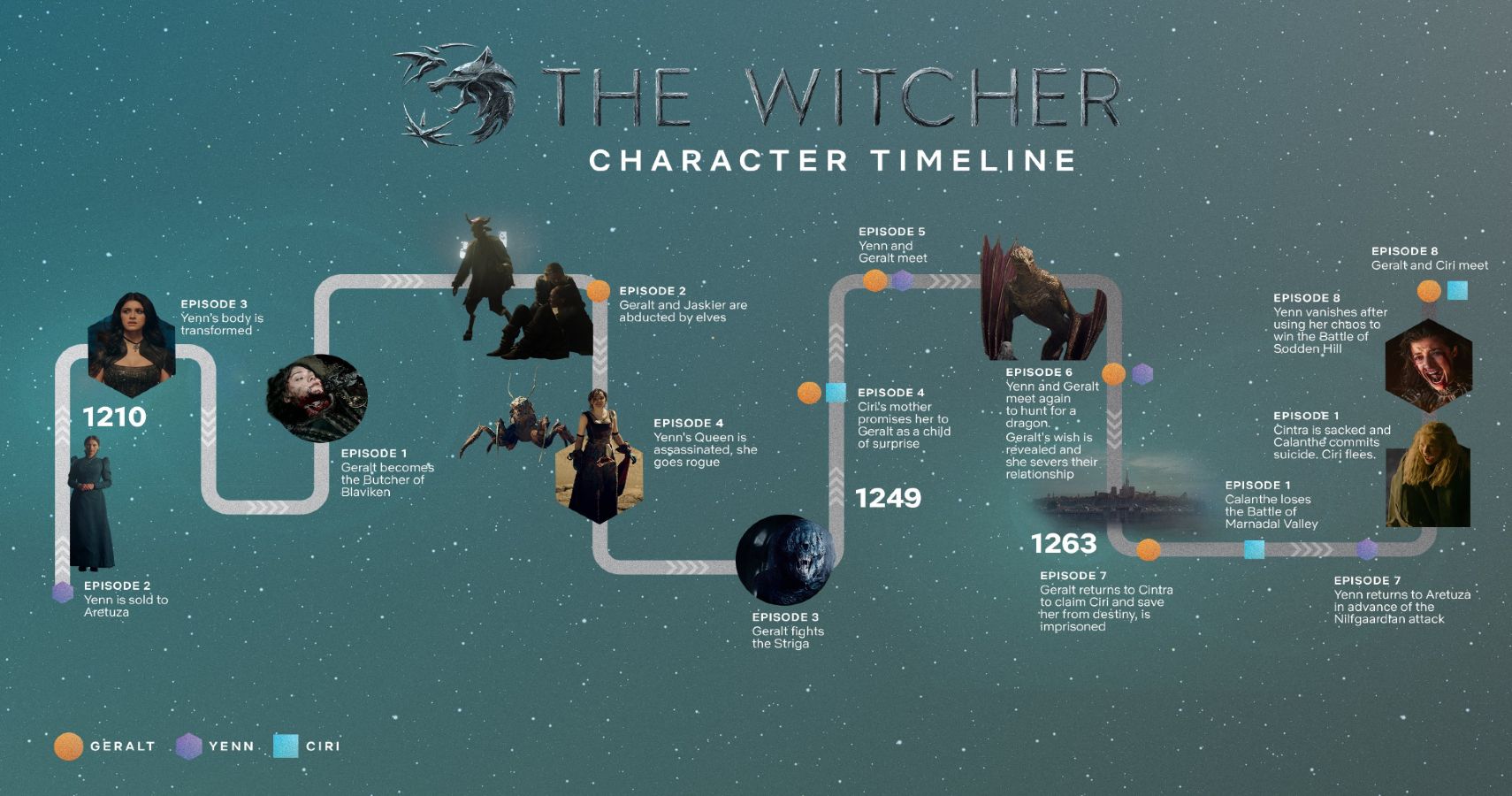Although the first season of The Witcher has become a smash hit, some viewers found themselves a bit lost thanks to the way events were presented, out of chronological order and at times occurring decades apart without clear indication of time having passed. The show makes no effort to hold the hand of the viewer, so here is a brief summary of everything that happened in season one, and how events were connected between episodes.
What Is A Witcher? Is One Witchier Than Another?
The violent world in which The Witcher takes place exists only because of a strange occurrence, the result of an event from nearly a thousand years before the show called the Conjunction of the Spheres. In sum, species from several planes of existence were forced together: elves and dwarves were suddenly forced to share their world with humans and monsters.
Dealing with the monsters resulted in the creation of Witchers, who were often orphaned children subjected to processes of mutation, the majority of which did not survive. Geralt is unique among the Witchers because of his white hair, which was the result of receiving more mutagens than a normal child, and still he survived. In the show, we see Geralt functioning as Witchers have for some time, acting as roaming exterminators, moving from one town to the next to find work, hated by most people and considered freaks, and yet, often needed to keep a place safe.
Yennefer’s Origin Story Is The Show’s Starting Point
Episode two introduces us to Yennefer, hunchbacked, picked on, and sold to Aretuza for her magic potential. This is the earliest event in the show, and Yennefer’s subsequent time at the Northern Academy of Wizardry sees her grow in power, and in episode three, we see this culminate and her physical transformation. Aedirn becomes her home as she advises the king for years, during which we catch a first glimpse of Geralt of Rivia.
Episode one is up next, where we see Geralt arrive at the town of Blaviken in search of monsters to slay for coin, but instead, finds only a conflict between princess Renfri and the sorcerer Stregobor. Geralt is hesitant to pick a side in the conflict between the two, but ultimately kills both Renfri and her men, but not before she reveals a prophecy that the girl in the forest will be his destiny. The locals of Blaviken already have a strong distaste for Witchers, and having had no context of the brutal killings in the street, they label Geralt as “the Butcher of Blaviken.”
Episode two continues chronologically for Geralt, as he meets Jaskier and the pair are abducted by the elves. At first Geralt finds Jaskier to be a pest, but soon the pair form a bond in friendship and mutual benefit. Jaskier takes the fantastic happenings to Geralt and turns them to songs, earning him coin and acclaim, while Geralt gains the benefit of a one-man public relations machine who works tirelessly to improve upon a negative reputation. The White Wolf is touted by Jaskier as the name to combat the negative effects of the events that led to “the Butcher of Blaviken.”
Yennefer’s Game Of Thrones
In episode four, we see that Yennefer has been playing puppet master in Aedirn for decades, but that length of time is not exactly clear to the viewer because Yennefer appears to not have aged thanks to her transformation. Everything crashed down around her however when the Queen is assassinated by the King, and Yennefer almost loses everything in the process, including her desire to continue with these political games, and she leaves. In episode three, Geralt arrives in Temeria to deal with the Striga, the result of a curse placed on a child that was the result of incest between King Foltest and his sister.
Queen Calanthe of Cintra And The Law Of Surprise
Throughout these years, Queen Calanthe of Cintra had been growing in power, conquering her enemies and earning a reputation as a military prodigy. In episode four, Gerald and Jaskier attend an event that seeks to name a husband for Pavetta, Queen Calanthe’s daughter. The unexpected arrival of Duny, a cursed knight, reveals that Roegner, Calanthe’s now dead husband, invoked the Law of Surprise as a reward for saving his life.
The Law of Surprise is a major and recurring issue for the story, which is to say that one promises to give that which they have but do not know. In this case the reward was Pavetta since Calanthe was pregnant, with Roegner unaware. With everything resolved, in a manner of speaking, Duny thanks Geralt for his assistance during the conflict by himself invoking the same Law of Surprise, which is immediately problematic, as Pavetta is revealed to be pregnant with Ciri, the child we have seen throughout the show, but who is still not born when looking at events in chronological order.
Geralt, being a Witcher, wants nothing to do with the ensuing political problems that such a claim imposes, and so he leaves Cintra to remove himself entirely from the situation. Unfortunately, destiny cannot be trifled with in The Witcher. Episode five sees Geralt attempt to rectify the situation with the help of wishes from a djinn, which ultimately fails, but results in the meeting with Yennefer, who has chosen to command a small town through her magical manipulations as she searches for more power. This is also the first time we see Geralt as a big softy when Jaskier’s life is in danger, how touching.
Geralt Accepts His Destiny, Eventually
Episode six marks a turning point for Geralt’s worldview. Fourteen years have passed in which he has avoided the bounds of destiny that tie him to Ciri, but while on the hunt for a dragon, Yennefer berates him for avoiding his fate. Revealing the last wish made to the djinn has bound the pair together, Yennefer leaves Geralt, who finally decides to return to Cintra, which we see in Episode seven, where he is imprisoned.
The Fall Of Cintra And Ciri’s Journey
As we reach the end of the first season’s’ story, the source of confusion for viewers becomes clear. It is only now that Queen Calanthe’s loss at the battle of Marnadal Valley, the sacking of the city, and the fleeing of Ciri have any significance, all of which happened in episode one. Episode seven shows us Yennefer and the other magic users in Aretuza to try and stem the flow of the Nilfgaardian Empire’s forces, and episode eight shows us Yennefer giving into chaos and vanishing, as Geralt finally meets up with Ciri in the forest.
With the timeline all cleared up, a re-watch of the first season should make far more sense, especially before the release of season two!
Source: The Witcher, Netflix

